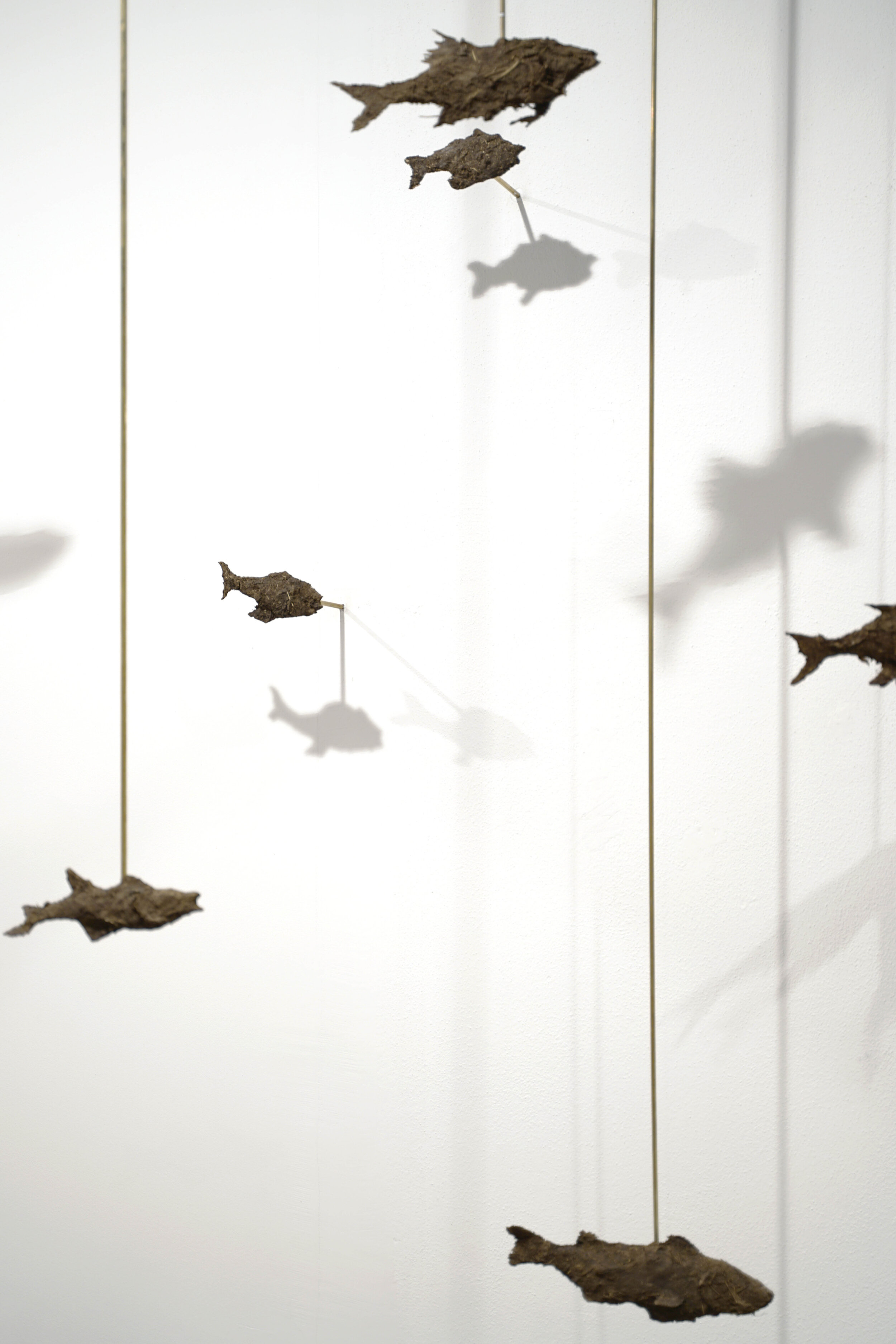
Petrit Halilaj & Alvaro Urbano
*1986, Kosovo / *1983, Spain
both live and work in Berlin, Germany
EN
Petrit Halilaj‘s research could be considered as part of the artistic and literary current of magical realism, in which reality and imagination, political and folkloric elements, as well as personal and collective memories mingle. Petrit Halilaj operates with his traumatic past, which connects his personal experience with the history of his country of origin, Kosovo. His practice consists in reappraising the past transforming it into an imaginative universe to awaken collective and personal consciousness. In Halilaj‘s practice, elements of reality are transformed into a symbolic dictionary that includes birds, canaries and chickens, the nest, the ocarina – a Neolithic musical instrument, moths, etc.
In the context of the Bienniale Gherdëina 7, Petrit Halilaj and Alvaro Urbano (*1986, Kosovo/*1983, Spain) present the work Petrit at Night/Alvaro at Night, for which the artists made bird houses and placed photographs of each other in them while they slept. Each of the bird houses contains either Halilaj‘s or Urbano‘s sounds of snoring and sleeping, and thus merges as a subtle, playful and intimate interlude with the urban environment.
As part of the exhibition in the Sala Trenker, Petrit Halilaj moreover is showing an installation of fishes, formed from a mixture of soil and animal dung, that reacts to the destruction of the natural history museum at the time of the war in his native Kosovo, which was converted into a museum of ethology during the reconstruction, which resulted in the loss of the museum‘s archive of the natural and animal world.
IT
La ricerca di Petrit Halilaj (*1986, Kosovo) potrebbe essere considerata come parte del suo atteggiamento artistico e letterario legato al realismo magico, in cui si mescolano realtà e immaginazione, elementi politici e folcloristici, memoria personale e collettiva. Petrit Halilaj parte da un passato traumatico dove la sua esperienza personale è strettamente legata alla storia del suo Paese d’origine, il Kosovo. La sua pratica consiste nel ripercorrere i fatti del passato, trasformandoli in un universo immaginario che possa risvegliare la coscienza collettiva e individuale. Gli elementi della realtà costituiscono un dizionario simbolico che comprende uccelli, polli, nidi o falene.
Nell’ambito della Biennale Gherdëina 7, Petrit Halilaj e Alvaro Urbano (*1983, Spagna) presentano “Petrit at Night”/“Alvaro at Night”, in cui gli artisti hanno costruito delle casette per uccelli e vi hanno collocato i suoni del dormire e del russare di Halilaj o di Urbano, creando un sottile, giocoso e intimo interludio all’ambiente urbano.
Nell’ambito della mostra nella Sala Trenker, trova inoltre posto un’installazione costituita da pesci formati da terra, paglia ed escrementi, con la quale Petrit Halilaj affronta la distruzione del Museo di Storia Naturale al tempo della guerra in Kosovo e al cui posto è stato costruito un Museo Etnografico, con la conseguente perdita del precedente archivio del mondo naturale e animale.
DE
Die Recherchen von Petrit Halilaj (*1986, Kosovo) können als Teil seiner künstlerischen und literarischen Haltung des magischen Realismus betrachtet werden, in der sich Realität und Imagination, politische und folkloristische Elemente, so wie persönliche und kollektive Erinnerungen vermischen.
Halilaj arbeitet mit seiner traumatischen Vergangenheit, die ihn als persönliche Erfahrung mit der Geschichte seines Herkunftslandes Kosovo verbindet. Seine Praxis besteht darin, die Vergangenheit zu ergründen und diese in ein imaginatives Universum zu verwandeln, um ein kollektives und persönliches Bewusstsein zu wecken. In Halilajs Praxis werden Elemente der Realität – z.B. Vögel, Hühner, Nester oder Motten - in ein symbolisches Wörterbuch verwandelt.
Im Rahmen der Biennale Gherdëina 7 präsentieren Petrit Halilaj und Alvaro Urbano (*1983, Spanien) die Arbeit „ Petrit at Night“/„Alvaro at Night“. Dazu bauten die Künstler Vogelhäuschen, welche entweder Halilajs oder Urbanos Schnarch- und Schlafgeräusche hörbar wiedergeben, und findet sich damit in der urbanen Umgebung als subtiles, spielerisches und intimes Intermezzo einfinden.
Im Rahmen der Ausstellung im Trenker-Saal zeigt Petrit Halilaj weiters eine Installation von aus Schmutz, Stroh und Exkremente geformten Fischen, mit welcher er die Zerstörung des naturhistorischen Museums und seinem Wiederaufbau zu einem Volkskundlichenmuseum zu Zeiten des Krieges in seiner Heimat Kosovo thematisiert, welcher den Verlust des musealen Archives der Natur- und Tierwelt zur Folge hatte.




